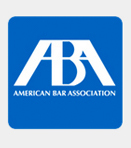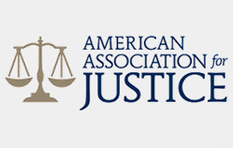The moments and hours following a slip and fall accident represent a critical window for evidence preservation. Conditions change rapidly. Wet floors dry, debris gets cleaned up, and witnesses disperse. In Florida premises liability cases, the strength of your claim depends heavily on the evidence you gather while details remain fresh and physical evidence remains intact.
When a property owner or their insurance company learns of your injury, they often move quickly to alter, clean, or eliminate evidence that could demonstrate negligence. Immediate documentation protects your legal rights and creates an objective record that cannot be disputed or rewritten later. The evidence you collect at the scene becomes the foundation of your case. Understanding negligence in premises liability is essential to building a strong claim.
The Bruner Law Firm has represented slip and fall victims for over 30 years across Florida. Our experience shows that clients who document evidence thoroughly and promptly achieve stronger settlements and verdicts. We guide our clients through each step of the evidence collection process to ensure nothing is overlooked. If you’ve been injured, contact our slip and fall lawyer team for a free consultation.
Document the Scene Immediately: What to Photograph and Video
What Photos to Capture
Photograph the exact location where you fell, including the hazardous condition that caused your fall. Capture the surrounding area to show context, including lighting conditions, nearby signage, and the overall layout of the space. Take photos from multiple angles and distances. Include close-ups of the hazard itself and wider shots showing how the hazard relates to foot traffic patterns and normal use.
Document any warning signs or the absence of warning signs. Photograph the condition of the floor, stairs, or surface where you fell. If weather played a role, including rain, ice, or snow, capture those conditions as well. These images create an objective record of conditions at the precise moment of your fall. This documentation is critical for personal injury claims.
Photograph any visible injuries you sustained. Document bruises, cuts, or other marks while they remain visible. These photos establish the immediate impact of your fall and support your injury claims. Medical professionals will reference these images when evaluating your case.
Video Documentation Best Practices
Video provides context and perspective that still photos cannot capture. Record a walkthrough of the area, narrating what you see and describing the hazard, lighting, and any factors that contributed to your fall. Keep videos steady and well-lit. Aim for 30 seconds to 2 minutes per video. This is long enough to establish context but focused enough to remain clear and compelling.
Video evidence proves particularly valuable in slip and fall cases because it shows the relationship between the hazard and the surrounding environment. It demonstrates how a reasonable person might encounter the hazard and why the condition posed a danger. This type of evidence often becomes critical during mediation or settlement negotiations.
Gather Witness Information Before They Leave
Witnesses often leave the scene quickly, making them difficult to locate later. Identify anyone who saw your fall or observed the conditions that caused it. Approach them calmly and explain that you were injured and need their account of what happened. Most people will cooperate if asked respectfully and provided with a clear explanation of why their information is needed.
Ask witnesses if they are willing to provide contact information and a statement. Explain that their account may be important if you pursue a claim. Most witnesses understand the importance of helping an injured person and will provide their information willingly. This is similar to how witnesses are gathered in car accident cases.
What Information to Collect from Witnesses
Obtain each witness’s full name, phone number, and email address. Ask what they saw and have them describe the hazard and your fall in their own words. Note their relationship to the property, such as whether they were a customer, employee, regular visitor, or a similar individual. Ask if they would be willing to provide a formal statement later if needed.
Document the witness’s occupation and employer if relevant. This information helps establish their credibility and availability for future testimony. Ask whether they have any connection to the property owner or business, as this information helps identify potential bias. Strong witness testimony can significantly impact settlement negotiations.
Getting Written or Recorded Statements
If possible, ask witnesses to write a brief account of what they saw and sign it with the date. A written statement, signed and dated by the witness, carries significant weight in legal proceedings. If witnesses are unwilling or unable to write, ask if you may record their statement on your phone with their permission.
A recorded statement captures the witness’s words, tone, and demeanor. This makes it more difficult for the opposing party to dispute what the witness observed or to claim the witness’s memory has changed. Always obtain permission before recording. Florida law requires consent from ALL parties to a conversation before recording is legal. Under Florida Statutes §934.03, recording any private communication without the explicit agreement of everyone involved is illegal.
Report the Incident Officially
Contact the property manager, store manager, or business owner immediately and report your fall. Request that they document the incident in writing. Ask for a copy of any incident report they complete. Note the name, title, and contact information of everyone you speak with.
Keep all written communications, such as emails, text messages, letters, and incident reports. These create a timeline showing when the property owner learned of the hazard and your injury. This timeline often proves critical in establishing that the property owner knew or should have known about the dangerous condition. This documentation is essential for proving premises liability.
Property owners in Florida have a legal duty to maintain safe premises and to address known hazards promptly. Documentation showing that you reported the hazard and the property owner’s response strengthens your case significantly. Under Florida premises liability law, including Florida Statutes § 768.0755, which addresses dangerous conditions such as slips and falls in business establishments, property owners can be held liable for injuries caused by hazardous conditions on their property.
Preserve Medical Records and Document Your Injuries
Seek Immediate Medical Evaluation
Do not delay seeking medical care after a slip and fall. Some injuries develop over hours or days, and delaying treatment can complicate your case. A medical evaluation creates an official record linking your injuries to the fall. Medical professionals document the mechanism of injury, how the fall caused your specific injuries, which strengthens your case considerably.
Seek medical attention even if you feel relatively fine immediately after the fall. Adrenaline can mask pain and injury symptoms. A prompt medical evaluation establishes a clear connection between the fall and any injuries you develop. This is particularly important for spinal cord injuries and brain injuries that may not be immediately apparent.
Keep Comprehensive Medical Documentation
Retain all medical records, test results, imaging studies, and treatment notes. Document every appointment, procedure, and medication. These records establish the extent of your injuries and the direct causation link between the fall and your medical condition.
Medical records prove particularly important in slip and fall cases because they provide objective evidence of your injuries. Insurance companies and opposing counsel scrutinize injury claims carefully. Comprehensive medical documentation demonstrates that your injuries are real, documented, and directly caused by the fall.
Track Ongoing Treatment and Recovery
Continue documenting your recovery journey throughout your treatment. Note pain levels, limitations on daily activities, time missed from work, and ongoing treatment needs. This documentation demonstrates the lasting impact of your injuries and supports claims for damages, including lost wages, medical expenses, and pain and suffering.
Keep a personal journal documenting your recovery. Note how your injuries affect your daily life, work capacity, and quality of life. This subjective documentation complements objective medical records and helps establish the full scope of your damages. Understanding how to calculate damages in personal injury cases is essential for maximizing your recovery.
Collect Physical Evidence and Document the Scene
Retain any clothing or footwear you wore during the fall. These items may show damage or wear patterns relevant to the accident. Keep any objects involved in the fall, a broken step, a defective handrail, or debris that caused the hazard. Physical evidence provides tangible proof of the dangerous condition.
Document any safety equipment failures. If a handrail was loose, if lighting was inadequate, or if floor treatment was improper, photograph and describe these conditions thoroughly. Request maintenance and inspection records from the property owner. These records often reveal whether the owner knew about the hazard and failed to address it. This is a key element in proving negligence. This is similar to how defective product liability cases are built.
Photograph any repairs made to the area after your fall. If the property owner repairs the hazard shortly after your accident, this suggests they knew the condition was dangerous. Such repairs can support an inference of negligence. This evidence is often presented during depositions to establish knowledge of the hazard.
Request Surveillance Footage and Security Records
Most commercial properties maintain security cameras. Formally request that the property owner keep all surveillance footage from the date and time of your fall. Provide specific details about the location and time. Request footage from multiple angles if available.
Put your preservation request in writing. Email works well and creates a documented record. A written request establishes that the property owner received notice to keep evidence. If the property owner fails to keep footage after receiving your written request, this failure can support an inference that the footage would have shown negligence.
Understand that property owners have a legal obligation to keep evidence once they know, or reasonably should know, that a claim may arise—typically through a written preservation letter or other notice. This obligation, called a “duty to preserve,” prevents property owners from destroying evidence to avoid liability. Violation of this duty can result in sanctions and adverse inferences against the property owner. Learn more about what happens after a demand letter is sent.
Contact The Bruner Law Firm
The Bruner Law Firm represents slip and fall victims throughout Florida. Our attorneys have recovered compensation for clients injured due to property owner negligence. We handle all aspects of evidence gathering, case development, and negotiation with insurance companies. Visit our results page to see examples of cases we’ve successfully resolved. You may also find it helpful to read client testimonials to gain insight into how we handle cases with care.
We offer a free consultation to discuss your slip and fall case. During this consultation, we review the circumstances of your fall, discuss the evidence you have collected, and explain your legal options. There is no obligation, and we do not charge fees unless we recover compensation for you.
Call The Bruner Law Firm today at (850) 243-2222 to schedule your free consultation. You can contact us through our online form. We serve clients throughout Florida from our offices in Fort Walton Beach, Panama City, Niceville, and Santa Rosa Beach.







